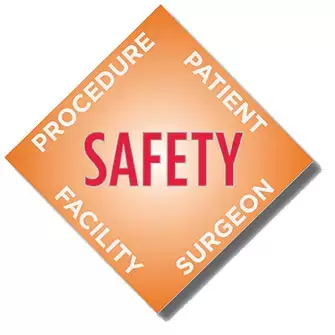|
A + B = C. So C - B = A. This may apply to simple arithmetic, but things get a bit complex when we are dealing with weight gain and weight loss.
We store our excess energy in the form of fat. Excess calories we may have acquired from our diet. This excess of fat gets stored in our body as fat deposits in different locations. Fat immediately under the skin can be pinched. This layer of fat is found between the skin and muscles. This is also the layer that can be removed with liposuction. Fat also gets stored deep inside our body, close to our internal organs. This is visceral fat. We can neither pinch this fat nor get it removed with plastic surgery. A proper diet can help us get back to our ideal body weight. In some situations, bariatric surgery achieves the same end. However, a prolonged period of increased fat has effects beyond the fatty tissue. It stretches out the overlying skin. Visceral fat also stretches out the fascial layer. This layer is closely associated with the abdominal muscle layer. When we lose fat, the size of the fatty layer reduces. This may be dramatic in cases of severe weight reduction as with weight loss (bariatric) surgery. The stretched out skin and fascia may not get back to the dimensions before the weight gain. As a result, individuals end up with loose folds of skin. To improve this appearance, we have to surgically remove the excess folds of skin. These surgeries are together clubbed under body contouring procedures. We usually wait for a year or more for the weight to stabilize and allowing the skin to recoil by itself before attempting any skin correction. The same approach is used for different body parts, arms (brachioplasty), abdomen (abdominoplasty), thighs (thighplasty) and torso (body-lift). The presence of stretched out skin and fascia is the reason why liposuction may not be the right procedure for abdominal fat. Liposuction can't do much to tackle the laxity of skin and underlying abdominal fascia. With liposuction alone, we may worsen the skin laxity of the abdomen resulting in an increase in loose folds of skin after the procedure. The same line of reasoning is applied to individuals who present for a reduction in the size of arms. We undertake it in two stages, with the first being deflation with diet or liposuction and a second stage with the removal of loose folds of skin. To conclude, we have to tackle the laxity of skin and deeper fascia in cases of weight loss following periods of excess weight gain. These may have undergone irreversible changes. Treatment of such deformities often requires the management of tissues like skin and fascia with the help of body contouring procedures. Such an approach helps us to optimize aesthetic outcomes. Visit the following to learn more, 1. Liposuction 2. Brachioplasty 3. Abdominoplasty In case of any doubts, we would be glad to hear from you.
Comments are closed.
|
AuthorI like to keep it simple. CategoriesArchives
June 2024
Categories |
- Home
-
Cosmetic
- Fat grafting
- Swellings and moles
- Scar revision
- Leukoderma (Melanocyte transfer)
- Hair transplant
- Facial rejuvenation procedures
- Nose job (Rhinoplasty)
- Cleft lip nose correction
- Ear (Otoplasty)
- Lip reduction
- Breast augmentation
- Breast reduction
- Tuberous breasts
- Axillary breasts
- Gynecomastia
- Liposuction
- Brachioplasty (Arm contouring)
- Abdominoplasty (Tummy tuck)
- Female genital rejuvenation
-
Reconstructive
- Contact
- Blog
- Home
-
Cosmetic
- Fat grafting
- Swellings and moles
- Scar revision
- Leukoderma (Melanocyte transfer)
- Hair transplant
- Facial rejuvenation procedures
- Nose job (Rhinoplasty)
- Cleft lip nose correction
- Ear (Otoplasty)
- Lip reduction
- Breast augmentation
- Breast reduction
- Tuberous breasts
- Axillary breasts
- Gynecomastia
- Liposuction
- Brachioplasty (Arm contouring)
- Abdominoplasty (Tummy tuck)
- Female genital rejuvenation
-
Reconstructive
- Contact
- Blog
You can leave us a comment using the contact form below.
We shall get back to you at the earliest.
We shall get back to you at the earliest.
Links
- Face procedures | Rhinoplasty, Otoplasty, Lip reduction, Fat grafting
- Body procedures | Gynecomastia , Breast reduction, Abdominoplasty, Brachioplasty, Liposuction
- Skin procedures | Scar revision, Moles, Leukoderma surgery
Let's be friends !
Follow us at Facebook and Twitter.
Follow us at Facebook and Twitter.
© 2024 Amicus Clinic (Plastic Surgery Centre, Trivandrum). All rights reserved.
 RSS Feed
RSS Feed



